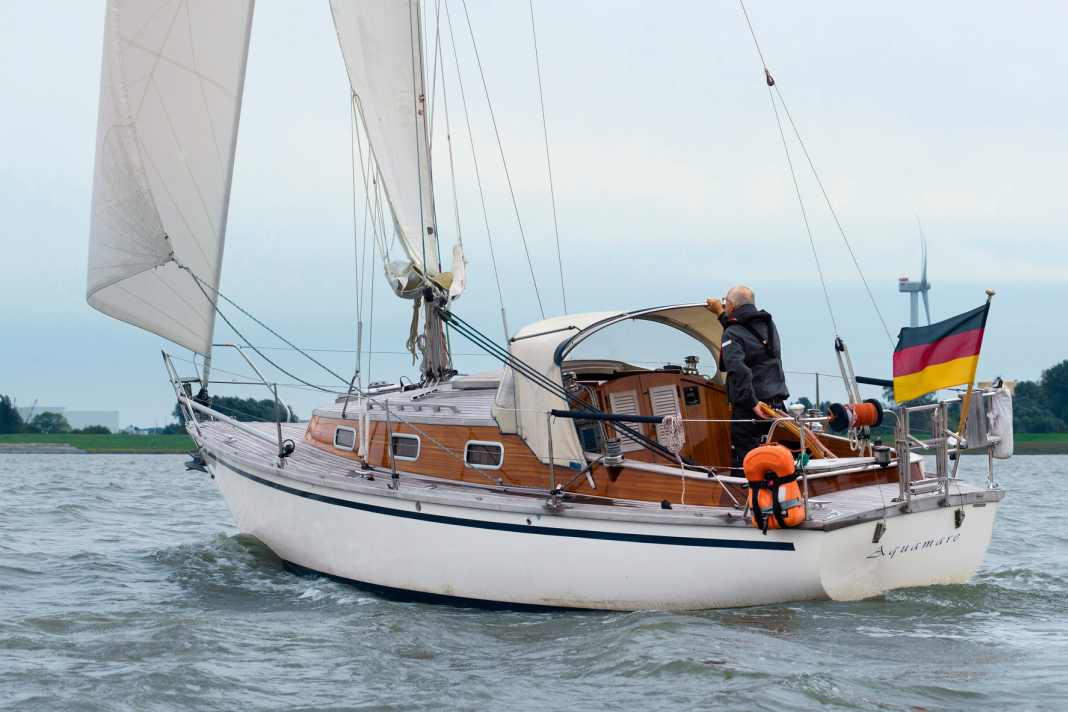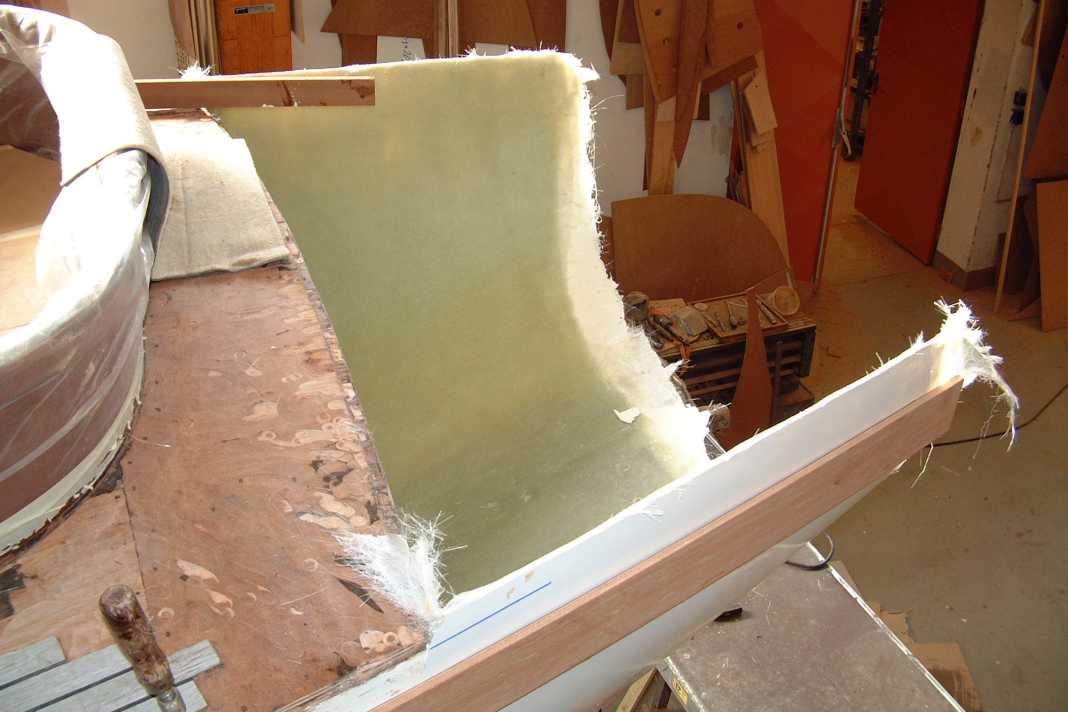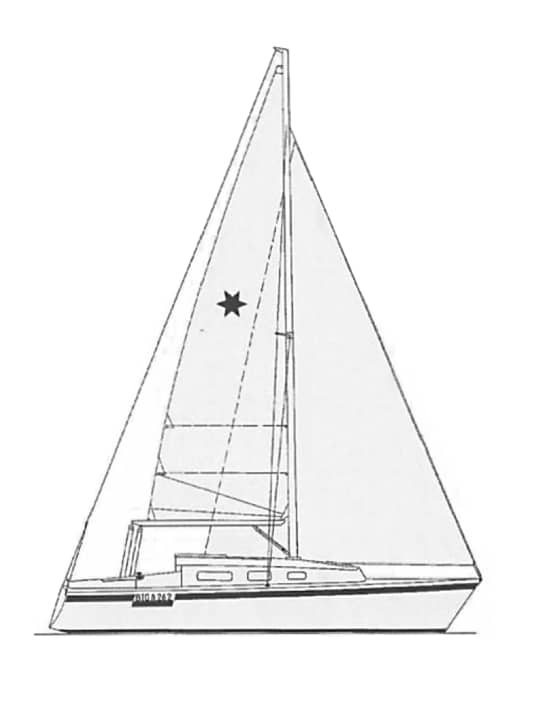





"A day's sailing is like a week's holiday for me," says Michael Schäfer, beaming on his "Aquamare". "Even when I'm not sailing, I just love being on board. I feel completely at home here, which is certainly helped by the fact that so many nice people have their boats moored in this great harbour."
The man from Baden has visibly arrived at the Nordenham marina on the Weser. Schäfer originally comes from Offenburg, the town on the Upper Rhine that calls itself the "Gateway to the Black Forest". He worked in the IT industry in Berlin for around 30 years. In 2004, he obtained his inland boating licence and sailed his first boat, a Conger dinghy, on the capital's inland waters. When Michael Schäfer retired in 2019, he moved to his partner in northern Germany: to the north of the Hanseatic city of Bremen, in the Vegesack neighbourhood on the north bank of the Weser, which is steeped in maritime history. From then on, he sails his second boat, a Micro Weyer, on the Zwischenahner Meer.
Also interesting:
He discovers Nordenham, around 20 nautical miles down the Weser from Vegesack, as the berth for boat number 3, a 6.2 metre Jeanneau Sun 2000. The marina there, surrounded by a belt of reeds, is quiet and idyllic in the dyke foreland to the south of the town on the left bank of the Weser. In 1983, six clubs joined forces at this location, which dries out at low tide, and since then have each operated their own jetty as the Nordenhamer Sportboothafen-Gemeinschaft.
The Weser already offers more space for sailing here than off Bremen-Vegesack, and the Outer Weser and the Wadden Sea are quickly reached. Schäfer's desire for another larger boat soon grows - after all, it would open up a much larger sailing area, such as the nearby East Frisian Islands during extended summer cruises. "I would never have sailed as far as Helgoland with my little Sun 2000. I also want to make my partner even more enthusiastic about sailing with more comfort on board," explains Schäfer.
The retiree quickly remembers that he once marvelled at a Biga yacht on the jetty in Berlin. "I spent quite a while walking around the boat and looking at it from all sides. I immediately thought the construction principle was brilliant," says Michael Schäfer. "The hull is made of GRP, so I hardly have any work to do as the owner. The superstructure and interior fittings are made of excellently crafted precious wood, which gives it a particularly high-quality appearance."
In fact, his "Aquamare" can confidently be described as a piece of jewellery. But somehow its dimensions don't quite match those of the current Biga 242, 270, 292 or 330 models, which were designed by Juliane Hempel and Georg Nissen. And it seems a little too big for the older Biga 262. In fact, "Aquamare" is a Biga model that has never existed in the product range of the Gerhard Bicker boatyard in Ahlen-Dolberg. A one-off.
Hull of the Biga 262 is extended by 55 centimetres
It happened like this. In 2004, a potential customer approached the company founded 50 years earlier; Gerhard Bicker had been building wooden paddle boats in his small boatyard in the deepest inland region since 1954, and sailing boats, pirates and migratory birds since the early 1960s. The first Biga 24 was built in 1975, and with 240 units sold, it remains the most successful Biga model to date.
Heribert Streuer's design had a GRP hull with a superstructure traditionally made of mahogany marine plywood. With this combination, the shipyard stands out visually from the large range of purely plastic yachts - and still does today. The meticulous timber construction also contributes to the superior quality of the Biga yachts, which shows no sign of the plastic hull below deck. Prospective Biga owners have various options for the rigging, keel and interior design. The first owner of the future "Aquamare" already quite likes the Biga 262 model of the time. The design by Fritz Harz is still trailerable and, according to the shipyard, combines sporty and family-friendly sailing with a sail area of 26 square metres and a displacement of 2.7 tonnes. However, the stylish eight-metre-long yacht is a little too small for the prospective buyer, who would like more space and comfort.
So he commissions a customised new build. The hull of the Biga 262 is extended by 55 centimetres to 8.55 metres, which also slightly increases the length in the waterline. The hull was also built two centimetres higher and fitted with a positive transom. "The stern also doesn't have the lower edge that caused the standard 262 to seize up when the boat was overloaded aft," explains junior shipyard manager Bicker.
The 1.40 metre deep keel is designed with a lead annex and internal diesel tank. The entire superstructure, the complete cockpit and the four forecastle boxes are made of mahogany, as is the stowage space on the foredeck. The wood is clear varnished ten times. "The owner also wanted the double coaming with the swallows' nests that he had seen on the Biga 292," explains Bicker. The shipyard naturally also realised this special request from the customer. "Although I personally don't like the fact that the cockpit and superstructure no longer look like one piece due to the additional angle," says the shipyard boss.
"Maintenance backlog" is a foreign word among all owners
The boat, which the owner henceforth refers to as the "Biga 282" and the shipyard as the "Biga 262 Plus", is designed to be single-handed. The senior shipyard manager himself builds a beautiful tiller extension in the curved shape of the tiller, and "Aquamare" is fitted with an autopilot.
All instruments, including the VHF radio, are positioned in the cockpit. For maximum sailing pleasure, the inland rig with a longer mast is selected, on which triradially cut laminate sails, a fully battened mainsail and a furling genoa are used. A 44 square metre gennaker is ordered for light wind conditions. In strong winds, a storm jib can be used as a coversail. The customised sprayhood is fitted with a fixed plexiglass panel.
The first owner paid around 110,000 euros for the one-off construction and customised trailer in 2004. He initially sailed his "Aquamare" on the Spanish Mediterranean coast, later on the Dutch IJsselmeer. When he decided to sell his boat in 2012, he took it to the Bicker shipyard for an overhaul. "The antifouling and anodes will be renewed there and the hull will be polished," it says in the exposé at the time. "The boat is therefore offered in mint condition." The fact that this particular Biga was sailed exclusively by the owner himself and covered with a full tarpaulin all year round also contributes to this. She always spent the winters indoors.
The second owner buys "Aquamare" from the shipyard. For him too, who uses the Biga 262 Plus exclusively for day cruises on the Baltic Sea, the word "maintenance backlog" is a foreign one. "He had all the work carried out by a shipyard," says Michael Schäfer. When he bought "Aquamare" in August 2021 as the third owner, the 17-year-old yacht was still in "visually and technically very good condition".
"Aquamare" easy to handle single-handedly
For the transfer from Großenbrode to the Weser, Schäfer takes a professional skipper from Bremerhaven with him for support. He instructs him in the finer points of sailing gear as well as how to use the autopilot. "When we sailed out on the Elbe after the trip through the Kiel Canal, there were quite a few waves. Nevertheless, everything felt really good and safe," Schäfer recalls enthusiastically.
Even on today's October day on the Weser, after setting sail in a force five southerly wind against the tidal current, the going is somewhat rough. With a single reefed main and slightly reefed genoa, however, the new owner has his "Aquamare" under control single-handed without any problems. He can enjoy the sporty end-of-season cruise to the full.
The Biga is agile and easy to steer with the tiller and impresses with its good sailing characteristics. The crew sits protected behind the high coaming in the deep, self-draining cockpit. In combination with the large sprayhood, this ensures relatively dry sailing. The distance between the cockpit benches allows good support with the feet when the "Aquamare" is shifting. The floor of the spacious cockpit, like the deck, is made of solid teak rods glued to marine plywood. Halyards and reefing lines are redirected into the cockpit, which means that you do not have to leave the cockpit to operate the sails; this was important to the first owner for safety reasons and was therefore his express wish.
For the helmsman, the mainsheet is easily accessible on its riding beam with traveller and the genoa sheets on their self-tailing winches. The companionway can be quickly closed with the stylish hinged door made of varnished and unvarnished wood. When opened, however, the two parts of the door cover the instruments and the steering compass - the only small drawback.
Woodwork at the highest level
After two hours of sailing fun, the keel yacht is back at her berth, where she is stuck in the soft mud at low tide. The interior is classically cosy with a headroom of a good 1.80 metres. The natural wood furniture has not been livened up with white surfaces. The woodwork is all of the highest quality. Here, too, many of the first owner's individual wishes were realised. For example, the table dividing the saloon holds both nautical charts and six bottles of flavoursome alcoholic beverages. The berths in the two saloon berths can be widened by folding up the back cushions. The leeboards can also be raised to make them fully seaworthy.
To starboard is the functional galley with sink, refrigerator compartment, plenty of storage space in the cupboards, lockers and drawers as well as a Wallas diesel cooker. Lowering the stainless steel flap over the ceramic hob turns it into a diesel hot-air heater. Opposite on the port side is the spacious toilet room with pump toilet. A fan in the ceiling and the opening hatch in the superstructure ensure sufficient ventilation. The connected faeces tank can be emptied via the deck suction system. A boiler provides hot water, including from the outdoor shower in the cockpit. In the foredeck, the V-shaped double berth offers space for two additional crew members.
A secure storage area for valuables has also been concealed in the yacht, which has a remarkable amount of easily accessible storage space.
Aquamare" comes out of the water quite late, the season ends in mid-October. Michael Schäfer will tow his yacht on the trailer to the Bicker shipyard in Ahlen. A more powerful towing vehicle has been purchased especially for this purpose. The hot water boiler is to be checked. The diesel tank also appears to have a mini leak. Nevertheless, the to-do list is very manageable. A new set of sails is on Schäfer's medium-term wish list as a major investment. The jetties in the Nordenham marina will be back in the water at the beginning of April. Michael Schäfer will therefore be able to start the first full season with his unique Biga in good time.
Until then, anticipation reigns. "My partner is also very fond of 'Aquamare', which is of course the best prerequisite for sailing trips together," he reveals and hopes for extended sailing trips. Heligoland is on the wish list, as are the East Frisian Islands. A summer on the Baltic Sea also appeals to him. "So far, my high expectations of 'Aquamare' have been fully met," assures Michael Schäfer. "So I'm simply looking forward to spending a lot of time on board, where I feel so comfortable."
How a Biga 262 becomes a 282




Technical data of the Biga 262 Plus/Biga 282

- Torso length: 8,55 m
- Width: 2,50 m
- Weight: 2,8 t
- Depth: 1,40 m
- Mast length: 10,00 m
- Mainsail: 15,2 m2
- Genoa: 20,5 m2
The article first appeared in YACHT issue 02/2022 and has been revised for this online version.

